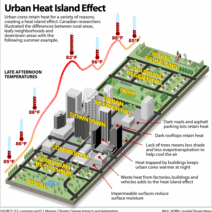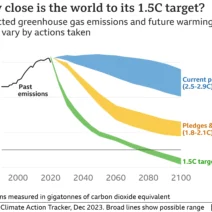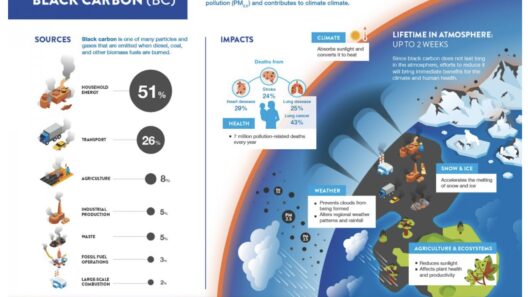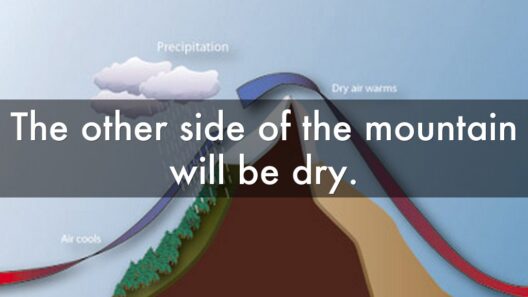The phenomenon of melting sea ice has emerged as a focal point in the discourse surrounding global climate dynamics. As the world’s temperature gradually rises, profound implications arise not solely for the polar regions but for ecosystems, weather patterns, and human societies globally. This is not merely a tale of ice diminishing; it is a narrative underscored by intricate interdependencies within the climatic system. To fathom the evolution of our global environment, one must appreciate the myriad influences of melting sea ice and the risks it manifests.
Firstly, it is paramount to understand the role of sea ice in regulating the Earth’s temperature. Sea ice primarily reflects sunlight due to its high albedo effect. When sunlight is reflected back into space, it helps maintain cooler temperatures in polar regions. However, as temperatures rise, this ice diminishes, leading to an expansion of open water surfaces that absorb more solar radiation. This feedback loop accelerates warming, leading to even greater ice loss and causing temperatures to rise more rapidly than previously forecasted.
Moreover, the melting of sea ice significantly affects ocean circulation patterns. The Arctic Ocean is pivotal in the global conveyor belt, driven by thermohaline circulation, which maintains climate stability by distributing heat across the planet. As fresh water from melting ice enters the ocean, it potentially disrupts this delicate system. Changes in salinity and temperature can lead to alterations in deep-water formation processes, which have ramifications for global weather systems, including the patterns of monsoons and hurricanes that are vital for many terrestrial ecosystems and human agriculture.
Additionally, the disintegration of polar ice sheets introduces another critical factor: the release of methane, a potent greenhouse gas. Permafrost, which underlies much of the Arctic region, stores vast quantities of organic material that, when thawed, release methane into the atmosphere. This gas has a warming potential that is approximately 84 times greater than carbon dioxide over a 20-year period. As ice melts at an alarming rate, the risk of methane release escalates, further exacerbating global warming and creating a precarious scenario for long-term climate stabilization efforts.
The intricate relationship between sea ice and wildlife cannot be overstated. Many species in polar regions rely on sea ice for survival. Polar bears, for instance, depend on stable ice platforms for hunting seals, their primary prey. As ice recedes, these magnificent creatures are forced to travel further or face starvation. The decline in sea ice not only threatens individual species but also disrupts entire food webs. This loss reverberates through the marine ecosystem, affecting organisms from algae to apex predators.
Humans are not immune to these changes. Coastal communities around the world face increasing risks from rising sea levels—a direct consequence of melting ice. Estimates suggest that rising seas could displace millions of people by the year 2050. Critical infrastructure is at stake, with cities like Miami, New Orleans, and even New York grappling with the prospect of higher tides and more frequent flooding. Moreover, warming oceans facilitated by melting ice contribute to more intense storms, a pressing concern for those living in coastal regions.
Interestingly, the narratives of climate change often emphasize immediate consequences, yet the psychological and socio-political ramifications deserve equal attention. The urgency surrounding climate discussions leaves little room for a contemplative approach to solutions. It is vital, therefore, not just to advocate for technological interventions but also to promote a cultural shift towards sustainability and respect for our planet’s intricate systems. Understanding the anthropogenic origins of the crisis forms a foundational layer for devising holistic strategies.
The geopolitical landscape is also influenced by the melting Arctic ice. As pathways for maritime navigation open, nations vie for access to untapped resources and shipping routes. This pursuit demonstrates the intertwined nature of economic interests and environmental challenges. Tensions heighten as countries assert territorial claims, complicating international relations and provoking the need for collaborative governance initiatives to fend off territorial disputes while managing shared resources sustainably.
The financial ramifications of climate change driven by melting sea ice can no longer be disregarded. The economic impacts manifest in various sectors, from agriculture reliant on stable climate patterns to fisheries affected by shifting habitats. Investing in resilient infrastructure, transitioning to renewable energy, and fostering innovation in carbon capture technologies are essential steps. The costs associated with inaction—displacement, resource scarcity, and increasingly severe weather events—far outweigh the initial investments required for a sustainable transition.
In conclusion, the melting of sea ice is more than a warning sign; it is a complex tapestry of influences that necessitate urgent attention. This phenomenon’s implications resonate far beyond polar regions, reverberating through ecosystems, economies, and global communities. Addressing this crisis requires a multifaceted approach that embraces scientific scrutiny, innovative strategies, and international cooperation. The resulting paradigm shift can pave the way for a more harmonious relationship between humanity and the planet, helping to foster environment-centric policies rooted in careful stewardship of natural resources. As stewards of the Earth, vigilant awareness and proactive measures remain imperative.



